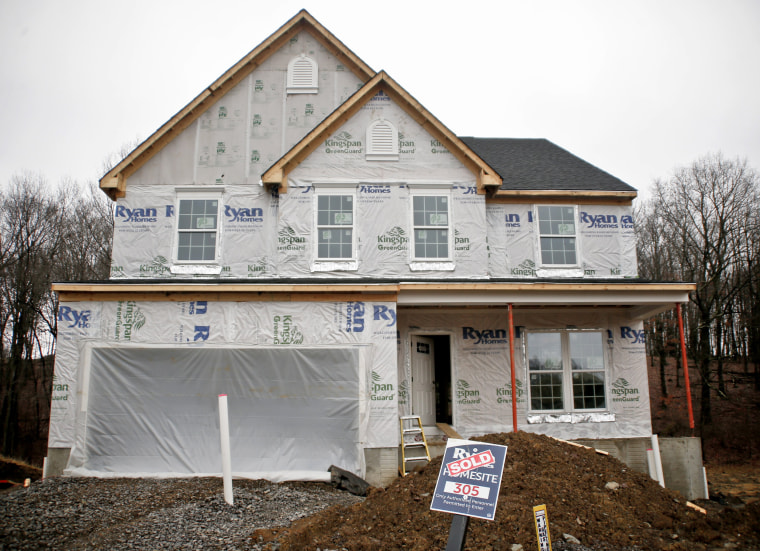Home sales fell for the second month in a row as a lack of inventory put would-be buyers in a holding pattern, even as interest rates are on track to continue inching higher.
The National Association of Realtors reported last week that sales of existing homes fell more than 3 percent in January, the largest decline in three years on an annualized basis. The trade group said this drop, combined with December’s falloff in sales, brings existing home sales down by almost 5 percent from a year ago.
NAR chief economist Lawrence Yun blamed the slump not on a lack of demand, but on a lack of homes available for people to buy. “The data shows we’re still in a very tight supply situation and the demand does not appear to have retracted,” he said. “The desire appears to be there, but there is a lack of inventory.”
This is especially tough on first-time homebuyers. “The inventory shortage is much more acute on the lower prices,” Yun said.
While homebuilding has been slow generally, starter homes are the category where the falloff has been sharper. Demographic factors like baby boomers staying in place as they age also keeps homes from cycling through to new owners, said Mark Zandi, chief economist at Moody's Analytics.
What’s more, for much of the recovery, builders have focused on more expensive homes. “They couldn’t make any money on entry-level housing until recently,” Zandi said. “They were focused on the high end of the market.” High land costs and increased permitting fees raised the fixed cost of building, he added, while a soft market prevented builders from increasing selling prices to make up for what it would cost to build middle-class homes.
An added wrinkle now as the jobs market rebounds is finding people willing and able to do the actual construction. “I do think builders are having a hard time ramping things up. They can’t find workers, especially in areas where demand is strong,” Zandi said.
The NAR’s Yun said that adding high-end homes will eventually ease the shortage, but it won’t happen immediately. “Some of the existing homeowners want to trade up and release their current home… It will filter down to first-time buyers,” he said, although he added that this could take until the second half of 2018.
In the meantime, interest rates — although still below historical norms — are on track to continue rising, a factor some experts say could be already playing a role in dampening sales.
"It’s an extremely interest-rate-sensitive housing market. It’s not too surprising to see this type of market reaction.”
“I think the overriding message we see from this market is it’s an extremely interest-rate-sensitive housing market. The housing boom has been built largely on the back of record-low interest rates,” said Daren Blomquist, senior vice president at ATTOM Data Solutions. “As that support is pulled out, it’s not too surprising to see this type of market reaction.”
Zandi said the pace of future increases in mortgage rates would likely be a greater factor. If the increase in rates is orderly, a steady rise consistent with a better job market, than net-net, no big deal. If rates were to spike or jump quickly, which is possible, "that would do damage,” he said.
One silver lining could be that lower sales eventually slow rapid price appreciation, Blomquist said. He predicted that home prices, which climbed 8 percent last year, would only grow around 3 to 5 percent this year. “It’s a sliver of good news that it’s swinging back to a buyer’s market. [Buyers] won’t be on that treadmill of continually out of reach home prices,” he said.
And housing market experts say there is some relief coming on the horizon. “We look back at 2017 and that was a really fantastic year for things like homebuilding, housing starts and construction permits,” said Cheryl Young, senior economist at Trulia.com. “We’re hoping to see that translate into some relief on the inventory crunch.”
